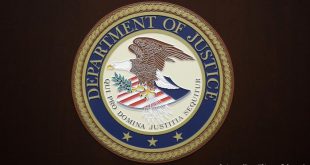WASHINGTON, DC – U.S. Senator Gary Peters (MI) today announced that he will serve as Ranking Member of the Commerce Subcommittee on Oceans, Atmosphere, Fisheries, and Coast Guard. The subcommittee oversees agencies critically important to the Great Lakes, including the U.S. Coast Guard (USCG), the National Oceanic and Atmospheric Administration (NOAA) and the National Weather Service.
“Next to our people, the Great Lakes are Michigan’s most precious resource and play a central role in our state’s economy, environment, and way of life,” said Senator Peters. “As Ranking Member of this subcommittee, I look forward to continuing my bipartisan work to protect and preserve the Great Lakes and strengthen our economy by advancing commercial shipping, fishing and tourism industries. These efforts take on a new urgency and importance in light of reports outlining President Trump’s proposed cuts to the Great Lakes Restoration Initiative, Coast Guard, NOAA and other important programs – cuts that pose a threat to our Great Lakes.”
NOAA provides research, information, and services to support decisions that affect recreation, the environment, public health and safety, and the economy of the Great Lakes. Their Office of Marine Sanctuaries manages the Thunder Bay National Marine Sanctuary to protect the unique history preserved by more than 100 discovered shipwrecks within the sanctuary while also maintaining responsible and sustainable recreational and commercial uses in the area. NOAA Great Lakes Environmental Research Laboratory (GLERL) in Ann Arbor studies, monitors, and predicts harmful algal blooms in Lake Erie and across the state of Michigan. GLERL also conducts numerous research projects and provides several services including forecasts of ice cover, water levels, and water currents on the Great Lakes.
The U.S. Coast Guard also has an active presence in Michigan patrolling and securing the Northern Border, with over a dozen stations across the state. In addition to responding to potential oil spills, the Coast Guard conducts ice-breaking operations to help facilitate the safe shipment goods in the winter and search-and-rescue missions to keep Michiganders safe throughout the year. Additionally, the Coast Guard is responsible for managing boat traffic on the Great Lakes by maintaining over 1,200 navigational buoys that must be retrieved each fall and returned each spring in order to avoid damage during the winter from severe weather and ice.
A member of the Senate Great Lakes Task Force and Committee on Commerce, Science and Transportation, Peters has made the protection and preservation of the Great Lakes a top priority. His efforts include:
- Co-authored legislation that was signed into law to increase federal pipeline safety and oversight by designating the Great Lakes as a high consequence area, improving oil spill response plans to address ice cover and require critical reviews of pipeline age and integrity.
- Worked to secure authorization for a new icebreaker in the Great Lakes as part of the Coast Guard Authorization Act of 2015. In the winter of 2014-15, ice cover on the Great Lakes contributed to an estimated 3.2 million ton decrease in cargo, costing nearly $355 million in lost revenue and 2,000 lost jobs.
- Passed a provision requiring the USCG to conduct an assessment of oil spill response activities for cleanup in fresh water, especially under heavy ice cover.
- Introduced the Great Lakes Fishery Research Authorization Act to provide better federal funding opportunities, update technologies and create new research projects to benefit the Great Lakes. Despite the size of the Great Lakes and the value of the fishery, the Great Lakes science program does not have the same funding authorizations as science centers on saltwater coasts.
- Led delegation of Great Lakes Senators in urging Department of Transportation to take a leadership role in the implementation of a first-ever regional strategy for the Great Lakes-St. Lawrence maritime transportation system (MTS). Currently, the Great Lakes MTS is a major regional and national transportation asset, but is significantly under-utilized and operating at an estimated 50% of its full capacity.
 Keweenaw Report Your Source for Local News and Sports
Keweenaw Report Your Source for Local News and Sports





